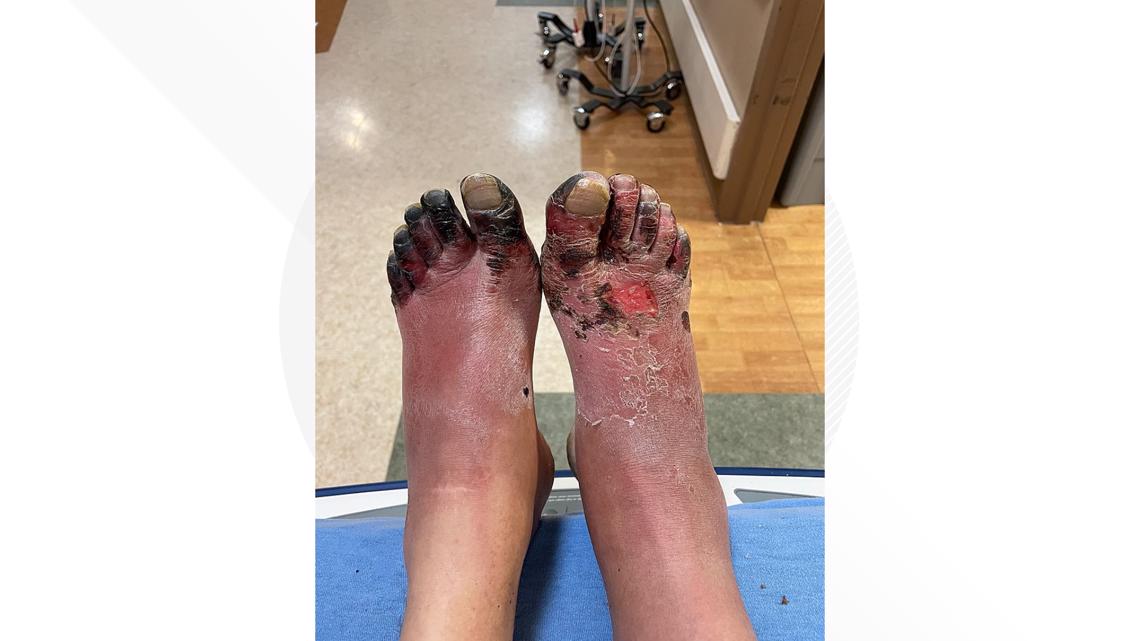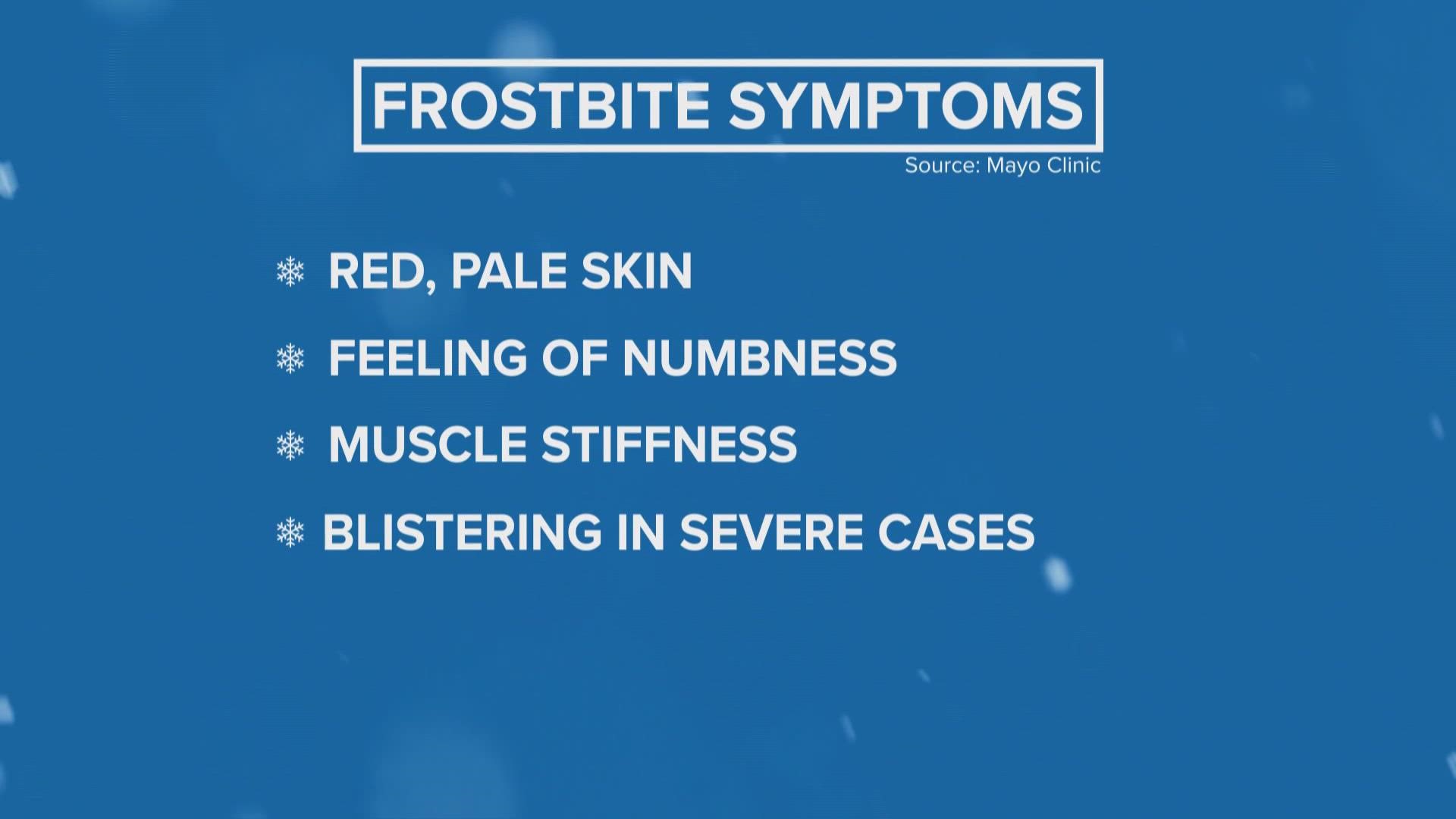DENVER — If you get caught out in this storm without properly covering up, you can get frostbite in just 5 to 10 minutes with the forecast windchill temperatures between -35 and -50 degrees, according to a National Weather Service wind chill chart.
And it takes about 30 minutes of exposure with wind chills of -20 to -34 degrees.
“So, what happens is, your blood vessels constrict, the blood kind of gets gooey and thick, and then with decreased circulation ice crystals start to form in the soft tissues around those blood vessels. That’s frostbite,” Dr. Ben Usatch with UCHealth said.
Usatch said extreme cases of frostbite are very obvious, with black and swollen skin. He said that advanced stage of frostbite usually leads to amputation.
Patients in this condition are often stranded in the wilderness for long periods of time, and he also said it's common in the homeless population.


The key is to catch it early. He said it starts with simple discoloring of the skin. Common areas are the face, feet, and hands.
“You just need to stay in tune with yourself," Usatch said. "When you’re starting to feel numb tingling sensations, it’s time to get yourself out of those elements.”
He said you can absolutely visit an emergency room doctor even for a mild case of frostbite, but if you decide to treat it yourself, he recommends a slow and gradual warmup using tepid -- not hot -- water. And take an anti-inflammatory like Motrin if you can do so safely.
Mild frostbite can be treated, but he said there will still be lasting permanent effects in your tissue, making it easier for it to return in the next storm.
“If you get frostbite on your cheek or on your nose, you’re going to be much more prone to get that same area subsequent events down the line," he said. "So your good decision-making now is going to last you a lifetime.”
SUGGESTED VIDEOS: Colorado Climate

